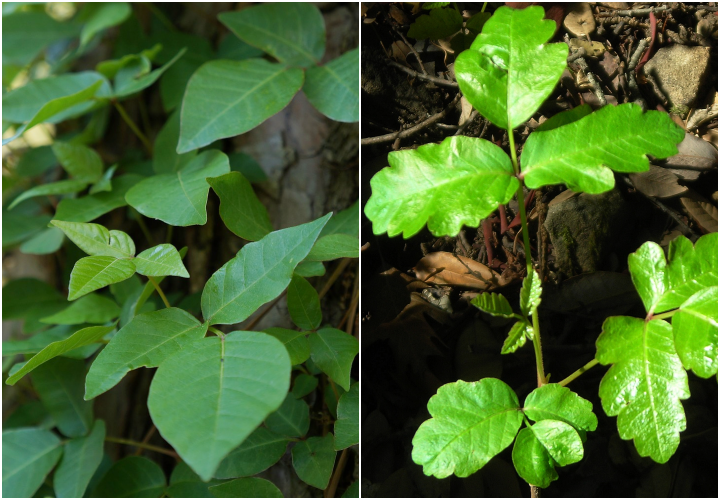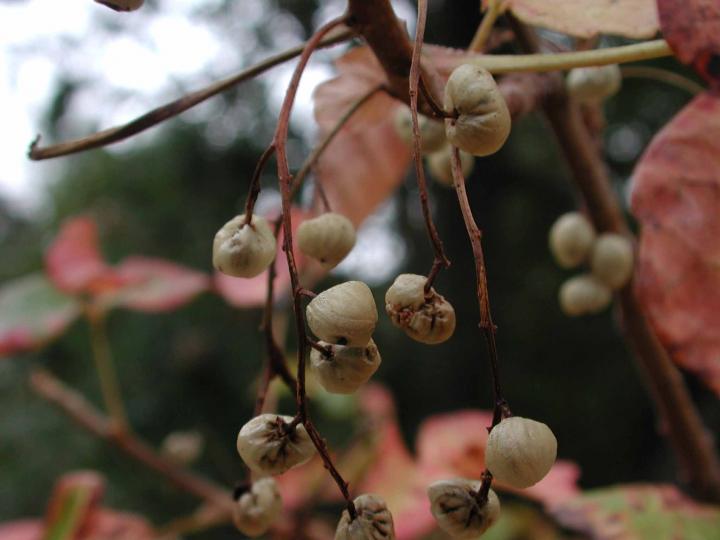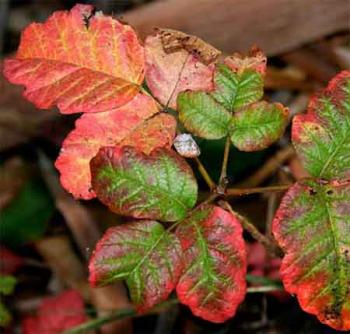
Poison oak can be a harmful plant if you touch it, as its urushiol oil will cause a nasty rash.
What's the Difference Between Poison Oak and Poison Ivy?
ADVERTISEMENT
I have found that treating the rash with Witch Hazel is very effective.
Witch hazel is a fantastic remedy for so many things!
OMgosh I’m so allergic to urishol it’s NOT funny. My head yes head swells the size of a basketball my eyes sweep shut so much so I woke up and thought I had gone blind! My legs had pustules blisters and scarlet coloring all the while weeping pus down my legs as I was demented in itching and crying in pain! And that was the first time I’m came in contact wit it, I was 9 years old. Now it’s worse!!!
Sheila-
That is horrible, we are so sorry to hear this! Poison Ivy can be so terrible.
When I was a youngster, I use to get poison ivy and oak every yr. Very miserable stuff. One year though I remember specifically, because I had got in poison oak and my left arm was so swollen and blistered up, the Dr.s thought they might have to ampitate it, if it didn't start getting better. I have always had to go get shots after getting poison ivy and oak, but that year didn't seem like shots were helping. When I got a little older, around 18, I used to work out of town for a hazardous material clean up crew. I ended up getting poison ivy on the job, out of state. My bosses brother took me to the hospital for a shot, the Dr. said he would fix me up. That was 30 years ago and I haven't had it since, until two days ago. Not sure what he gave me back then but it sure was worth the jab.
Good article thanks. But... You state poison oak growing to a height of only a few feet. Sorry to disappoint but i can show you poison oak vines 3”-4” in diameter at their base and growing to heights of 25’+ in amongst oak forests. If you go to Montaña de Oro State park on the Central Coast of California (near Los Osos and Morro Bay) and hike the Oats Peak trail or Manzanita trail or numerous others. Both the abundance, size and height of the poison oak will blow your mind. Also, hands down, the very best soap to use is is good old Pyrex Fels Naptha laundry soap bar. It’s pretty much straight Lye soap. Be sure to WASH TWICE in COLD WATER with plenty of Fels, rinse well both times with cold water. I’ve been climbing, hiking and mt. biking on the Central Coast for decades. I’ve spent weeks doing poison oak removal on a coastal ranch. Dug ditches through it installing plumbing systems. Clawed my way through it searching for new and old climbing routes. Been thrown ass over tea kettle off my mt. bike into thick growths of the stuff. I’ve been knowingly covered in poison oak more times than I can count. I’ve had it and it’s a painful experience I don’t ever want again. Fels Naptha works every time, even after hours of exposure. I take this subject seriously because I have a dear friend who back in the early 1990’s unknowingly made dream catchers along with her mom and sister, out of dormant/barren poison oak stalks. All three broke out bad within 24 hrs and were hospitalized and treated with cortisone injections. Her and her sister suffered hard in hospital for over four days and at home after for another week. But their mom got worse after day three, high fever to coma to death in five days from cerebral meningitis due to the urushiol poisoning. I have numerous other stories of run-ins with poison oak but that’s the worst of them.
I have lived in Santa Cruz, California for 35 years and can attest that indeed poison oak grows in huge shrubbery clumps/stands up to 12 feet high and unlimited widths as a stand from the coasts all the way up to the mountains. I regularly see vines up to 3"-4" circumference completely covering multiple trees in mixed forests. In fact, trees can look like poison oak trees once the vines get hold and take over. Even in the winter it can zap you as naked stems or vines. I carry a huge bottle of Tecnu in my car and always take it with me camping. Btw - your pet can be an endless source of exposure if they get the oil on their coat. I'm excited to hear about the Fels Naptha soap, but I hope I don't have to try it!!!! As a Wilderness Guide i'm always looking for the best interventions and treatments in the field, thanks.
Thanks for the wash-up tips.
I live on the central coast of California too, in the canyons east of Pismo Beach. There is a lot of 5+ foot high poison oak shrubbery here, however, behind the house there is a GIANT poison oak vine/tree a few inches in diameter and at least 60 feet tall growing up a tree!
So sorry to hear of your friends' accidental poisoning. Stay safe.
I wouldn't wish oak poisoning on my worst enemy. My rash turned into something that looked like a chemical burn. I'm getting treatment from my family doctor after not getting any relief from over the counter or home remedies.
I would like to know if you can burn the poison oak or ivy after its been cut down and has died, if not how do you get rid of it? Now I have never been allergic to the stuff, and I am on up in years, but I was cutting and cleaning out some poison oak/ivy about 2 weeks ago, and I don't know if maybe in my older years I may have gotten may not as resistible to it as I have always been. I have a very small place on my arm that itches like crazy and it just turns red. I put alcohol, etc on it but it stops but comes back itching. I forgot about trying the calamine lotion. I have always cut down the poison oak and just pulled out the vines and threw them away and most likely burned them, I have a lot of the dead vines to dispose of is why I ask if its safe to burn after it dies? I sure hope I haven't become allergic to it, I am the only one in the family that can remove it with out breaking out and been so thankful that I am not allergic to it. Have a great day.











